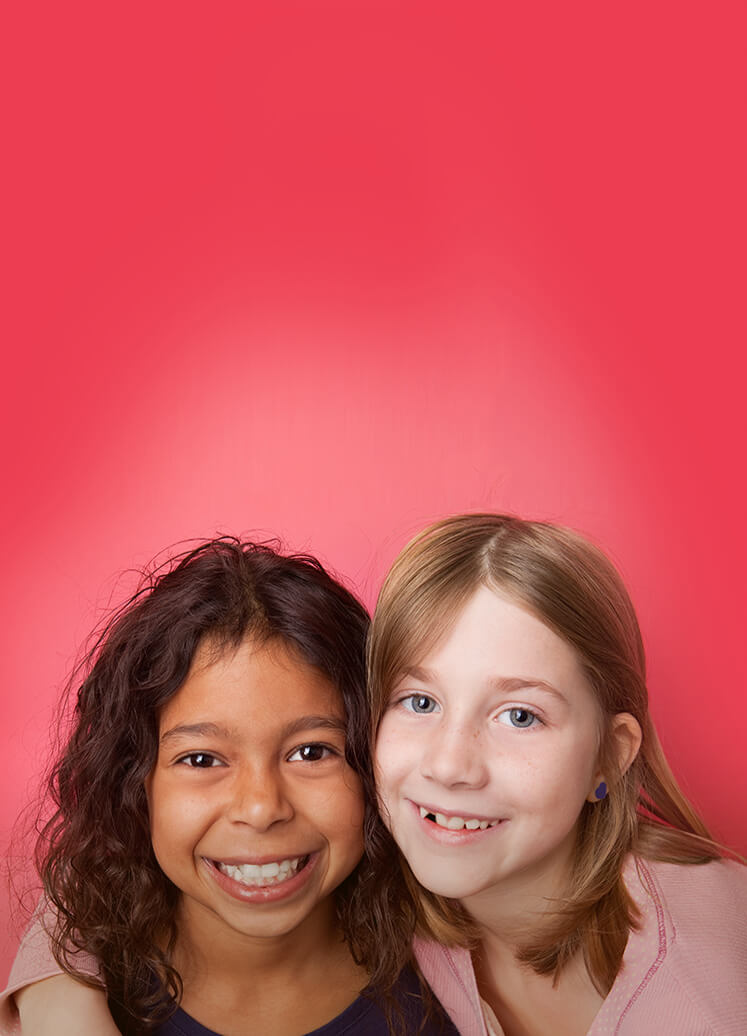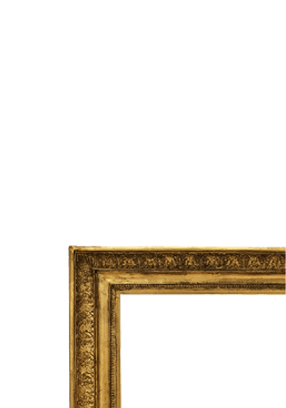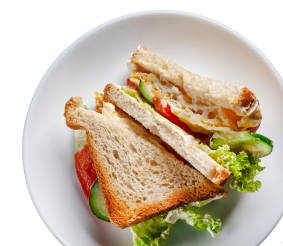Skip Navigation
Articles
 December 23, 2025 · Ginger Park
Winter Reading Challenge
Read at least 3 books during January 2026 to earn a cozy mug! This challenge is for all ages.
December 23, 2025 · Ginger Park
Winter Reading Challenge
Read at least 3 books during January 2026 to earn a cozy mug! This challenge is for all ages.
 December 23, 2025 · Travis Garwood
Artsy Crafty Library: Clay Ornaments
Handmade ornaments are keepsakes that reflect your creativity. Working with clay is wonderfully calming, making the process as enjoyable as the finished product.
December 23, 2025 · Travis Garwood
Artsy Crafty Library: Clay Ornaments
Handmade ornaments are keepsakes that reflect your creativity. Working with clay is wonderfully calming, making the process as enjoyable as the finished product.
 December 19, 2025 · Perry Hartmann
The Reel World: Holiday international film favorites
Try popular international holiday films for a change of pace!
December 19, 2025 · Perry Hartmann
The Reel World: Holiday international film favorites
Try popular international holiday films for a change of pace!
 December 16, 2025 · Debbie Reiff
Great Read Alouds: Welcoming a New Year
Check out wonderful picture books about time and seasons to read with your young ones. The end and beginning of a year is an opportunity to teach kids about time and how we measure it.
December 16, 2025 · Debbie Reiff
Great Read Alouds: Welcoming a New Year
Check out wonderful picture books about time and seasons to read with your young ones. The end and beginning of a year is an opportunity to teach kids about time and how we measure it.
 December 9, 2025 · Sherry Hess
Early Learning Tip: Creating traditions
Traditions create a sense of comfort and security for a child. Find suggestions for starting new traditions with your family.
December 9, 2025 · Sherry Hess
Early Learning Tip: Creating traditions
Traditions create a sense of comfort and security for a child. Find suggestions for starting new traditions with your family.
 December 5, 2025 · Kaitlyn Kriley
Shawnee County's Best Books of 2025
Let's look back on another fantastic year of reading! Find books to add to your to-be-read list and find out if your favorites made one of our lists.
December 5, 2025 · Kaitlyn Kriley
Shawnee County's Best Books of 2025
Let's look back on another fantastic year of reading! Find books to add to your to-be-read list and find out if your favorites made one of our lists.
 December 3, 2025 · Katie Keckeisen
Uncover local history using newspapers in the Topeka Room
Newspapers can be an amazing source of information if you're researching local history or genealogy. The library’s Topeka Room has many ways to access various newspapers that were published in Shawnee County.
December 3, 2025 · Katie Keckeisen
Uncover local history using newspapers in the Topeka Room
Newspapers can be an amazing source of information if you're researching local history or genealogy. The library’s Topeka Room has many ways to access various newspapers that were published in Shawnee County.
 December 2, 2025 · Brittany Keegan
Up From the Roots: Growing Our Connection with Nature
In our newest art exhibit we explore the soothing quality of the outdoors. The Alice C. Sabatini Gallery has been transformed into an art-filled garden.
December 2, 2025 · Brittany Keegan
Up From the Roots: Growing Our Connection with Nature
In our newest art exhibit we explore the soothing quality of the outdoors. The Alice C. Sabatini Gallery has been transformed into an art-filled garden.
 December 2, 2025 · Julie Nelson
Lost in the Stacks: Too Good to Be Altogether Lost
If you love Laura Ingalls Wilder, don’t miss this fresh new look at her beloved Little House books.
December 2, 2025 · Julie Nelson
Lost in the Stacks: Too Good to Be Altogether Lost
If you love Laura Ingalls Wilder, don’t miss this fresh new look at her beloved Little House books.
 November 28, 2025 · Lane Wiens, Shawnee County Horticulture Extension Agent
Winter prep: simple steps for a thriving spring garden
While you might not think about winter gardening, Master Gardeners suggest projects you can work on to set your garden up for success next growing season.
November 28, 2025 · Lane Wiens, Shawnee County Horticulture Extension Agent
Winter prep: simple steps for a thriving spring garden
While you might not think about winter gardening, Master Gardeners suggest projects you can work on to set your garden up for success next growing season.
 November 26, 2025 · Kaitlyn Kriley
While you wait for The Impossible Fortune
Check out novels with quirky and clever elderly characters who show us growing old doesn't have to be scary, even when murder may be involved.
November 26, 2025 · Kaitlyn Kriley
While you wait for The Impossible Fortune
Check out novels with quirky and clever elderly characters who show us growing old doesn't have to be scary, even when murder may be involved.
 November 25, 2025 · Liz Frazier
Discover family stories through conversations and DNA
Learn about library tools to inspire family conversations and capture family stories. You'll also find DNA family research tips from a professional genealogist and private investigator.
November 25, 2025 · Liz Frazier
Discover family stories through conversations and DNA
Learn about library tools to inspire family conversations and capture family stories. You'll also find DNA family research tips from a professional genealogist and private investigator.
 November 18, 2025 · Rain Schultz-Pruner
Great Read Alouds: Native American Heritage Month
These children's books are a terrific way to experience the joy of storytelling and art whether your family has Native American heritage or you want to deepen your understanding of the people and culture.
November 18, 2025 · Rain Schultz-Pruner
Great Read Alouds: Native American Heritage Month
These children's books are a terrific way to experience the joy of storytelling and art whether your family has Native American heritage or you want to deepen your understanding of the people and culture.
 November 18, 2025 · Brea Black
Artsy Crafty Library: Digital magazine inspiration
Access a huge variety of artsy and crafty magazines digitally with your library card. Explore new projects, new techniques and inspiration.
November 18, 2025 · Brea Black
Artsy Crafty Library: Digital magazine inspiration
Access a huge variety of artsy and crafty magazines digitally with your library card. Explore new projects, new techniques and inspiration.
 November 12, 2025 · Nessa Johnson
Reel World: Bingeable movies
If you feel like making a day of Gru, a day full of food, a day of musicals or perhaps a day of Hallmark, we've got you covered with one-checkout movie collections.
November 12, 2025 · Nessa Johnson
Reel World: Bingeable movies
If you feel like making a day of Gru, a day full of food, a day of musicals or perhaps a day of Hallmark, we've got you covered with one-checkout movie collections.
 November 5, 2025 · Deanna Niles
Kid Tested, Librarian Recommended: Navigating change
Diving into a good book is a way to learn how characters deal with change. Kids will enjoy these books because they’re filled with brave characters, exciting adventures and lots of heart.
November 5, 2025 · Deanna Niles
Kid Tested, Librarian Recommended: Navigating change
Diving into a good book is a way to learn how characters deal with change. Kids will enjoy these books because they’re filled with brave characters, exciting adventures and lots of heart.
 November 5, 2025 · Chris Blocker
Fiction Five: From one generation to the next
Check out new novels that explore the idea of intriguing generational tales, spanning decades and even centuries to complete the story.
November 5, 2025 · Chris Blocker
Fiction Five: From one generation to the next
Check out new novels that explore the idea of intriguing generational tales, spanning decades and even centuries to complete the story.
 November 4, 2025 · Liza Charay
Tune in to a variety of holiday music
The best part about holiday music is there is so much to choose from. There’s a holiday album that fits almost every mood. Whether that is pop music, orchestral, religious, or international, it’s there for you.
November 4, 2025 · Liza Charay
Tune in to a variety of holiday music
The best part about holiday music is there is so much to choose from. There’s a holiday album that fits almost every mood. Whether that is pop music, orchestral, religious, or international, it’s there for you.
 November 3, 2025 · Julie Nelson
Lost in the Stacks: Destroy This House
Her family? Bizarre. Her house? Hoarded. Yet Amanda dearly loved her complex, confounding parents.
November 3, 2025 · Julie Nelson
Lost in the Stacks: Destroy This House
Her family? Bizarre. Her house? Hoarded. Yet Amanda dearly loved her complex, confounding parents.
 October 27, 2025 · Ginger Park
30 Books in 30 Days: Kansas Reads to Preschoolers Challenge
Check out our new PreK reading challenge just for kids birth - 5 years old! You and your little one will enjoy bonding time and increasing early literacy skills. Snuggle in for some great reads at least 30 times in November.
October 27, 2025 · Ginger Park
30 Books in 30 Days: Kansas Reads to Preschoolers Challenge
Check out our new PreK reading challenge just for kids birth - 5 years old! You and your little one will enjoy bonding time and increasing early literacy skills. Snuggle in for some great reads at least 30 times in November.
 October 24, 2025 · Kaitlyn Kriley
While you wait for Twice
Check out novels that embrace the magic of second chances.
October 24, 2025 · Kaitlyn Kriley
While you wait for Twice
Check out novels that embrace the magic of second chances.
 October 22, 2025 · Liz Frazier
It's always Family History Month at the library
While October is officially Family History Month, our genealogy staff is always ready with the free resources to help you find your family stories.
October 22, 2025 · Liz Frazier
It's always Family History Month at the library
While October is officially Family History Month, our genealogy staff is always ready with the free resources to help you find your family stories.
 October 21, 2025 · Sherry Hess
Great Read Alouds: Bird Watching
The fall weather invites us to stop, wonder and look at nature. Discover entertaining books to inspire your family bird watching.
October 21, 2025 · Sherry Hess
Great Read Alouds: Bird Watching
The fall weather invites us to stop, wonder and look at nature. Discover entertaining books to inspire your family bird watching.
 October 20, 2025 · Kate Hughes
Artsy Crafty Library: Challenge yourself to a drawing a day
Come to the page with a sense of play and put the pen or pencil to paper every day for 30 days. Truly look at real people, animals and items while sketching and experience growing joy and skill.
October 20, 2025 · Kate Hughes
Artsy Crafty Library: Challenge yourself to a drawing a day
Come to the page with a sense of play and put the pen or pencil to paper every day for 30 days. Truly look at real people, animals and items while sketching and experience growing joy and skill.
Back to Top
 December 23, 2025 · Ginger Park
Winter Reading Challenge
Read at least 3 books during January 2026 to earn a cozy mug! This challenge is for all ages.
December 23, 2025 · Ginger Park
Winter Reading Challenge
Read at least 3 books during January 2026 to earn a cozy mug! This challenge is for all ages.
 December 23, 2025 · Travis Garwood
Artsy Crafty Library: Clay Ornaments
Handmade ornaments are keepsakes that reflect your creativity. Working with clay is wonderfully calming, making the process as enjoyable as the finished product.
December 23, 2025 · Travis Garwood
Artsy Crafty Library: Clay Ornaments
Handmade ornaments are keepsakes that reflect your creativity. Working with clay is wonderfully calming, making the process as enjoyable as the finished product.
 December 19, 2025 · Perry Hartmann
The Reel World: Holiday international film favorites
Try popular international holiday films for a change of pace!
December 19, 2025 · Perry Hartmann
The Reel World: Holiday international film favorites
Try popular international holiday films for a change of pace!
 December 16, 2025 · Debbie Reiff
Great Read Alouds: Welcoming a New Year
Check out wonderful picture books about time and seasons to read with your young ones. The end and beginning of a year is an opportunity to teach kids about time and how we measure it.
December 16, 2025 · Debbie Reiff
Great Read Alouds: Welcoming a New Year
Check out wonderful picture books about time and seasons to read with your young ones. The end and beginning of a year is an opportunity to teach kids about time and how we measure it.
 December 9, 2025 · Sherry Hess
Early Learning Tip: Creating traditions
Traditions create a sense of comfort and security for a child. Find suggestions for starting new traditions with your family.
December 9, 2025 · Sherry Hess
Early Learning Tip: Creating traditions
Traditions create a sense of comfort and security for a child. Find suggestions for starting new traditions with your family.
 December 5, 2025 · Kaitlyn Kriley
Shawnee County's Best Books of 2025
Let's look back on another fantastic year of reading! Find books to add to your to-be-read list and find out if your favorites made one of our lists.
December 5, 2025 · Kaitlyn Kriley
Shawnee County's Best Books of 2025
Let's look back on another fantastic year of reading! Find books to add to your to-be-read list and find out if your favorites made one of our lists.
 December 3, 2025 · Katie Keckeisen
Uncover local history using newspapers in the Topeka Room
Newspapers can be an amazing source of information if you're researching local history or genealogy. The library’s Topeka Room has many ways to access various newspapers that were published in Shawnee County.
December 3, 2025 · Katie Keckeisen
Uncover local history using newspapers in the Topeka Room
Newspapers can be an amazing source of information if you're researching local history or genealogy. The library’s Topeka Room has many ways to access various newspapers that were published in Shawnee County.
 December 2, 2025 · Brittany Keegan
Up From the Roots: Growing Our Connection with Nature
In our newest art exhibit we explore the soothing quality of the outdoors. The Alice C. Sabatini Gallery has been transformed into an art-filled garden.
December 2, 2025 · Brittany Keegan
Up From the Roots: Growing Our Connection with Nature
In our newest art exhibit we explore the soothing quality of the outdoors. The Alice C. Sabatini Gallery has been transformed into an art-filled garden.
 December 2, 2025 · Julie Nelson
Lost in the Stacks: Too Good to Be Altogether Lost
If you love Laura Ingalls Wilder, don’t miss this fresh new look at her beloved Little House books.
December 2, 2025 · Julie Nelson
Lost in the Stacks: Too Good to Be Altogether Lost
If you love Laura Ingalls Wilder, don’t miss this fresh new look at her beloved Little House books.
 November 28, 2025 · Lane Wiens, Shawnee County Horticulture Extension Agent
Winter prep: simple steps for a thriving spring garden
While you might not think about winter gardening, Master Gardeners suggest projects you can work on to set your garden up for success next growing season.
November 28, 2025 · Lane Wiens, Shawnee County Horticulture Extension Agent
Winter prep: simple steps for a thriving spring garden
While you might not think about winter gardening, Master Gardeners suggest projects you can work on to set your garden up for success next growing season.
 November 26, 2025 · Kaitlyn Kriley
While you wait for The Impossible Fortune
Check out novels with quirky and clever elderly characters who show us growing old doesn't have to be scary, even when murder may be involved.
November 26, 2025 · Kaitlyn Kriley
While you wait for The Impossible Fortune
Check out novels with quirky and clever elderly characters who show us growing old doesn't have to be scary, even when murder may be involved.
 November 25, 2025 · Liz Frazier
Discover family stories through conversations and DNA
Learn about library tools to inspire family conversations and capture family stories. You'll also find DNA family research tips from a professional genealogist and private investigator.
November 25, 2025 · Liz Frazier
Discover family stories through conversations and DNA
Learn about library tools to inspire family conversations and capture family stories. You'll also find DNA family research tips from a professional genealogist and private investigator.
 November 18, 2025 · Rain Schultz-Pruner
Great Read Alouds: Native American Heritage Month
These children's books are a terrific way to experience the joy of storytelling and art whether your family has Native American heritage or you want to deepen your understanding of the people and culture.
November 18, 2025 · Rain Schultz-Pruner
Great Read Alouds: Native American Heritage Month
These children's books are a terrific way to experience the joy of storytelling and art whether your family has Native American heritage or you want to deepen your understanding of the people and culture.
 November 18, 2025 · Brea Black
Artsy Crafty Library: Digital magazine inspiration
Access a huge variety of artsy and crafty magazines digitally with your library card. Explore new projects, new techniques and inspiration.
November 18, 2025 · Brea Black
Artsy Crafty Library: Digital magazine inspiration
Access a huge variety of artsy and crafty magazines digitally with your library card. Explore new projects, new techniques and inspiration.
 November 12, 2025 · Nessa Johnson
Reel World: Bingeable movies
If you feel like making a day of Gru, a day full of food, a day of musicals or perhaps a day of Hallmark, we've got you covered with one-checkout movie collections.
November 12, 2025 · Nessa Johnson
Reel World: Bingeable movies
If you feel like making a day of Gru, a day full of food, a day of musicals or perhaps a day of Hallmark, we've got you covered with one-checkout movie collections.
 November 5, 2025 · Deanna Niles
Kid Tested, Librarian Recommended: Navigating change
Diving into a good book is a way to learn how characters deal with change. Kids will enjoy these books because they’re filled with brave characters, exciting adventures and lots of heart.
November 5, 2025 · Deanna Niles
Kid Tested, Librarian Recommended: Navigating change
Diving into a good book is a way to learn how characters deal with change. Kids will enjoy these books because they’re filled with brave characters, exciting adventures and lots of heart.
 November 5, 2025 · Chris Blocker
Fiction Five: From one generation to the next
Check out new novels that explore the idea of intriguing generational tales, spanning decades and even centuries to complete the story.
November 5, 2025 · Chris Blocker
Fiction Five: From one generation to the next
Check out new novels that explore the idea of intriguing generational tales, spanning decades and even centuries to complete the story.
 November 4, 2025 · Liza Charay
Tune in to a variety of holiday music
The best part about holiday music is there is so much to choose from. There’s a holiday album that fits almost every mood. Whether that is pop music, orchestral, religious, or international, it’s there for you.
November 4, 2025 · Liza Charay
Tune in to a variety of holiday music
The best part about holiday music is there is so much to choose from. There’s a holiday album that fits almost every mood. Whether that is pop music, orchestral, religious, or international, it’s there for you.
 November 3, 2025 · Julie Nelson
Lost in the Stacks: Destroy This House
Her family? Bizarre. Her house? Hoarded. Yet Amanda dearly loved her complex, confounding parents.
November 3, 2025 · Julie Nelson
Lost in the Stacks: Destroy This House
Her family? Bizarre. Her house? Hoarded. Yet Amanda dearly loved her complex, confounding parents.
 October 27, 2025 · Ginger Park
30 Books in 30 Days: Kansas Reads to Preschoolers Challenge
Check out our new PreK reading challenge just for kids birth - 5 years old! You and your little one will enjoy bonding time and increasing early literacy skills. Snuggle in for some great reads at least 30 times in November.
October 27, 2025 · Ginger Park
30 Books in 30 Days: Kansas Reads to Preschoolers Challenge
Check out our new PreK reading challenge just for kids birth - 5 years old! You and your little one will enjoy bonding time and increasing early literacy skills. Snuggle in for some great reads at least 30 times in November.
 October 24, 2025 · Kaitlyn Kriley
While you wait for Twice
Check out novels that embrace the magic of second chances.
October 24, 2025 · Kaitlyn Kriley
While you wait for Twice
Check out novels that embrace the magic of second chances.
 October 22, 2025 · Liz Frazier
It's always Family History Month at the library
While October is officially Family History Month, our genealogy staff is always ready with the free resources to help you find your family stories.
October 22, 2025 · Liz Frazier
It's always Family History Month at the library
While October is officially Family History Month, our genealogy staff is always ready with the free resources to help you find your family stories.
 October 21, 2025 · Sherry Hess
Great Read Alouds: Bird Watching
The fall weather invites us to stop, wonder and look at nature. Discover entertaining books to inspire your family bird watching.
October 21, 2025 · Sherry Hess
Great Read Alouds: Bird Watching
The fall weather invites us to stop, wonder and look at nature. Discover entertaining books to inspire your family bird watching.
 October 20, 2025 · Kate Hughes
Artsy Crafty Library: Challenge yourself to a drawing a day
Come to the page with a sense of play and put the pen or pencil to paper every day for 30 days. Truly look at real people, animals and items while sketching and experience growing joy and skill.
October 20, 2025 · Kate Hughes
Artsy Crafty Library: Challenge yourself to a drawing a day
Come to the page with a sense of play and put the pen or pencil to paper every day for 30 days. Truly look at real people, animals and items while sketching and experience growing joy and skill.











